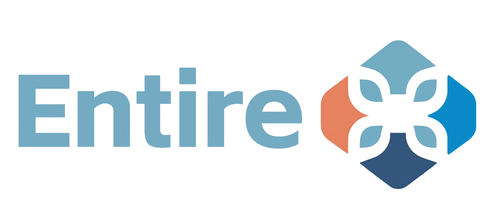Critical Tariff & Sourcing Answers for Electric Lamp (Bulb/Tube) Execs

The 2025 US tariffs on Chinese imports are reshaping the landscape for manufacturers and importers of electric lamps, bulbs, and tubes. Executives need swift, informed decisions on sourcing, manufacturing, and supply chain resilience. This Q&A offers targeted insights for leaders in the electric lamp industry.
- 1. Illuminating US Reliance: How Much Does the American Lamp Industry Depend on Chinese Manufacturing for Various Light Sources?
- 2. Global Light Grid: Pinpointing Alternative Lamp Production Hotspots & Key Suppliers Beyond China?
- 3. Cost Shifts: What are the Typical Unit Cost Increases for Finished Lamps from Alternative Asian Hubs Compared to China?
- 4. USMCA and Lamps: Can Mexican Assembly Meet Origin Rules, and What are the Industry-Specific Cost/Time Factors?
- 5. Lamp Logistics Labyrinth: Comparing Transit Times & Costs from China, Vietnam, and Mexico?
- 6. Efficiency Standards vs. Tariffs: How Do US Energy Regulations Impact Tariff-Driven Sourcing Shifts for Lamps?
- 7. Specialty Lamp Weak Links: Uncovering Material & Component Supply Chain Vulnerabilities?
1. Illuminating US Reliance: How Much Does the American Lamp Industry Depend on Chinese Manufacturing for Various Light Sources?
What percentage of electric filament lamps, discharge lamps (fluorescent, HID), and LED light sources (finished lamps/modules) does the US lamp industry currently source from mainland China?
The US lamp industry's reliance on China is extensive:
* LED Lamps (Finished Bulbs, Tubes, Modules): Approx. 70-85%. China dominates global manufacturing for most consumer/commercial LED lamps.
* Fluorescent Lamps (CFLs, Linear Tubes): Around 60-75%. Despite declining demand, China remains a key producer, especially for linear fluorescent tubes (LFLs).
* High-Intensity Discharge (HID) Lamps (e.g., Mercury Vapor, Sodium Vapor, Metal Halide bulbs): Roughly 50-60%. While specialized production (e.g., by Signify, Osram in Europe) exists, China offers scale/cost advantages for many common HID types.
* Halogen and Traditional Filament Lamps (Bulbs): Over 80-90%. Production of older technologies (A-shape incandescent, PAR halogen) has heavily consolidated in China.
* Specialty Lamps (e.g., UV lamps, IR bulbs, Arc Lamps, Specific Automotive lamps): Varies, but China holds a significant share (40-70% overall), higher for some high-volume types (certain UV-C tubes, automotive signal lamps).
2. Global Light Grid: Pinpointing Alternative Lamp Production Hotspots & Key Suppliers Beyond China?
Beyond mainland China, which countries are notable alternative production locations for LED lamps, specialty discharge lamps, or other electric lamp categories, and what is their capacity outlook, including key supplier brands?
Diversifying lamp sourcing is challenging, but alternatives exist:
* LED Lamps (Bulbs & Tubes):
1. Vietnam & SE Asia (Thailand, Malaysia): Growing LED lamp assembly hubs. Global brands like Signify (Philips) and Ledvance (Osram) have expanded production here alongside numerous OEM/ODMs. Might absorb 15-25% of US demand from China (1-3 yrs), but often rely on Chinese components.
2. India: Emerging potential with government support. Local brands (Surya Roshni, Havells, Syska LED) and global players (Signify, Ledvance) manufacture here. Could target 5-10% of diverted US demand, but scaling export quality/volume takes time.
3. Mexico: Proximity and USMCA attract lamp assembly. Global/US brands may establish/increase production, especially for bulky/quick-turnaround items. Potentially 5-15% of demand; lamp component ecosystem less developed than Asia.
4. Eastern Europe (Poland, Hungary): Existing lighting manufacturing (mainly for EU). Brands like Tungsram and facilities for Signify/Ledvance exist. Limited capacity for large US shift without new investment; more focused on specialized/higher-value lamps.
* Specialty Discharge & Traditional Lamps (Filament, Halogen, HID):
1. Europe (Germany, Netherlands, Hungary, Poland): Key global players like ams Osram (specialty, automotive), Signify (Philips specialty HID, projection), Ushio, Dr. Fischer, Narva produce high-performance, automotive, and niche industrial/medical lamps.
2. Japan: Home to specialized makers like Ushio (cinema, industrial UV/IR), Iwasaki Electric (EYE brand - HID, specialty halogen), Hamamatsu Photonics (scientific sources). Capacity is for high-value, not mass-market commodity lamps.
3. USA: Some domestic specialty lamp production by niche firms or US facilities of global companies like GE Lighting (Savant), Ushio America, Sylvania (Ledvance).
* Overall, rapidly shifting diverse lamp production (HS 8539) from China is hard. For many standard lamps, a full "China exit" is challenging short-term. Specialty/higher-value lamps have non-Chinese brand alternatives, often at a premium and with capacity limits for sudden shifts.
3. Cost Shifts: What are the Typical Unit Cost Increases for Finished Lamps from Alternative Asian Hubs Compared to China?
If sourcing finished lamps (e.g., LED bulbs, fluorescent tubes) from alternative Asian manufacturing hubs like Vietnam, Thailand, or India, what are the typical unit cost percentage increases compared to direct sourcing from highly optimized Chinese facilities?
Expect notable cost premiums for finished lamps (bulbs, tubes) from alternative Asian hubs:
* Vietnam/Thailand:
* LED Lamps (bulbs, tubes): +10% to +25%. Due to labor, imported Chinese component costs, initial inefficiencies, smaller scale.
* Other Lamp Types (e.g., some fluorescent tubes): Potentially +15% to +30%.
* India:
* LED Lamps (bulbs): +15% to +35%. Reflects developing local component supply chains, logistics, infrastructure, and productivity differences.
* Estimates are for comparable quality. Initial runs may have higher defect rates.
4. USMCA and Lamps: Can Mexican Assembly Meet Origin Rules, and What are the Industry-Specific Cost/Time Factors?
For electric lamp products, what are the prospects of meeting USMCA origin rules if final assembly or significant manufacturing is moved to Mexico, and what are specific cost/timeline factors for the lamp industry?
USMCA compliance for electric lamps (bulbs, tubes) assembled in Mexico is feasible but requires careful planning:
* Requirements: Typically RVC (50-60% North American value) or Tariff Shift rules. Critical lamp components (LED engines, drivers, glass envelopes/tubes, filaments) may need NA sourcing or substantial transformation in Mexico.
* Costs: Re-sourcing NA components, investment in Mexican lamp manufacturing lines, and compliance/certification efforts add cost.
* Timeline: Establishing a USMCA-compliant lamp supply chain and certification takes 12-24 months, including supplier qualification and line validation.
5. Lamp Logistics Labyrinth: Comparing Transit Times & Costs from China, Vietnam, and Mexico?
For finished lamps, how do total transit times and transport costs compare when shipping from major Chinese ports versus alternatives like Vietnam (sea) or Mexico (land/sea) to US distribution points?
(Illustrative door-to-door times & costs for FCL of lamps):
* China (Sea to US WC + Inland): 30-50 days.
* China (Sea to US EC + Inland): 40-65 days.
* Vietnam (Sea to US WC + Inland): 35-55 days. Similar sea freight to China or +$200-$800/FCL.
* Vietnam (Sea to US EC + Inland): 45-70 days.
* Mexico (Cross-border Truck/Rail to US): 5-15 days. Higher per-lamp freight as trucks carry less.
* Key Takeaway: Mexico offers speed, reducing inventory costs, but per-lamp freight can be higher. Asian sea freight is slower, often more cost-effective for bulk, but prone to delays.
6. Efficiency Standards vs. Tariffs: How Do US Energy Regulations Impact Tariff-Driven Sourcing Shifts for Lamps?
How do existing and upcoming US energy efficiency regulations (e.g., Department of Energy standards for lumens per watt, ENERGY STAR specifications) for lamps interact with decisions to shift sourcing due to tariffs?
US lamp energy efficiency standards are critical in tariff-driven sourcing shifts:
* Mandatory Compliance: All lamps sold in the US must meet DOE MEPS. New production sources must ensure lamps (LED A-bulbs, LFLs, reflectors) meet current standards (e.g., 45 lm/W GSL backstop).
* Testing & Certification: Lamps from new factories or with changed key components require re-testing/re-certification (ENERGY STAR, DLC), adding time/cost.
* Higher Standards Favor Capable Suppliers: Tightening standards favor makers with strong R&D in LED tech, phosphors, and thermal management, limiting choices for low-cost factories unable to meet performance tiers.
7. Specialty Lamp Weak Links: Uncovering Material & Component Supply Chain Vulnerabilities?
Beyond general LED components (chips, packages, drivers), are there specific supply chain vulnerabilities for critical materials or sub-components used in specialty lamps, such as quartz glass for UV/halogen lamps, specific noble gases for HID lamps, or advanced phosphors/materials for niche LED applications?
Yes, critical vulnerabilities exist for specialty lamp (bulb/tube) materials:
* High-Purity Quartz Glass/Tubing: For UV, semiconductor, and high-performance halogen lamps. Supply concentrated (China, Germany - Heraeus, Japan).
* Noble Gases (Xenon, Krypton, Neon): For discharge lamps (automotive HID, cinema Xenon). Specialized production, supply chains can be impacted by geopolitics.
* Specific Rare Earths for Lamp Phosphors: Many fluorescent and some specialty HID lamps use specific tri-band or other rare-earth phosphors (Europium, Terbium). China dominates processing.
* Tungsten Filaments/Coils: For halogen and specialty incandescent lamps. Expertise/production concentrated.
* Specialized Lamp Bases/Caps: Unique bases for specialty lamps may have few suppliers.
* Getters/Emitters for Discharge Lamps: Critical small components for HID/fluorescent lamp operation; niche supply.
* Disruptions in these niche material supply chains can severely impact essential specialty lamp availability, often with fewer alternative suppliers than general service LEDs.
Disclaimer: The information provided in this article is for general informational purposes only and does not constitute financial, legal, or specific sourcing advice. Market conditions are highly dynamic and specific advice should be sought from qualified professionals.




